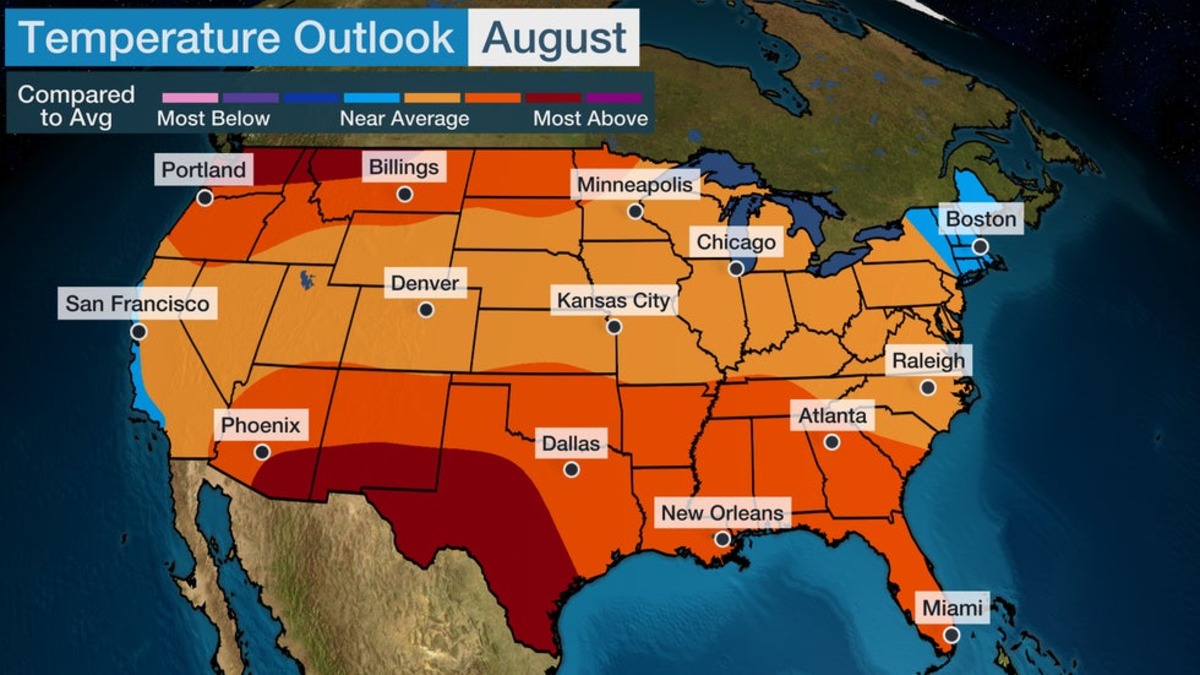Home>Weather and Climate>Using The Internet To Gather February Temperature Information: A High School Senior’s Approach


Weather and Climate
Using The Internet To Gather February Temperature Information: A High School Senior’s Approach
Published: March 6, 2024
Discover a high school senior's innovative approach to gathering February temperature information using the internet. Explore weather and climate data with this unique perspective.
(Many of the links in this article redirect to a specific reviewed product. Your purchase of these products through affiliate links helps to generate commission for Temperatures.com, at no extra cost. Learn more)
Table of Contents
Introduction
As a high school senior, you may be familiar with the excitement and challenges of exploring the world around you. One aspect of this exploration involves understanding the weather and climate patterns that shape our daily lives. In particular, the month of February presents a unique opportunity to delve into the intricacies of temperature fluctuations and their impact on various environments.
In this digital age, the internet serves as a treasure trove of information, offering a multitude of resources for gathering and analyzing February temperature data. Whether you're conducting a school project, exploring a personal interest, or simply seeking to deepen your understanding of weather patterns, harnessing the power of online platforms can provide valuable insights.
Throughout this article, we will embark on a journey to uncover the diverse methods and tools available for accessing February temperature information online. From weather websites and mobile applications to social media platforms and scientific databases, we will explore how these resources can be leveraged to gain a comprehensive understanding of temperature trends during this pivotal month.
By the end of this exploration, you will be equipped with the knowledge and skills to navigate the digital landscape effectively, enabling you to gather, analyze, and present February temperature data with confidence and precision. So, let's embark on this digital expedition and unlock the potential of online resources in unraveling the mysteries of February temperatures.
Read more: Saturn’s Temperature: Facts And Information
The Importance of February Temperature Information
The significance of February temperature information extends far beyond mere meteorological curiosity. This pivotal month serves as a crucial juncture in the annual climatic cycle, bearing profound implications for various facets of human life and the natural world. Understanding the nuances of February temperatures is essential for a multitude of reasons, encompassing environmental, agricultural, societal, and scientific dimensions.
Environmental Impact
February marks a transitional period in many regions, signaling the gradual shift from winter to spring or from summer to autumn in the Southern Hemisphere. The temperature patterns during this month play a pivotal role in shaping ecosystems, influencing the behavior of flora and fauna, and impacting the overall biodiversity of a given area. For instance, the timing of temperature fluctuations in February can influence the emergence of certain plant species, the migration patterns of animals, and the onset of seasonal changes in various habitats.
Agricultural Implications
In agricultural contexts, February temperature data holds immense significance for farmers, agronomists, and horticulturists. The information gleaned from temperature patterns during this month can inform crucial decisions related to crop planting, pest management, and overall agricultural planning. Understanding the temperature trends in February enables stakeholders in the agricultural sector to optimize their practices, mitigate potential risks, and harness the natural rhythms of the environment to enhance productivity and sustainability.
Societal Relevance
From a societal perspective, February temperature information directly impacts daily life, influencing activities such as outdoor recreation, energy consumption, and public health. The temperature trends during this month can shape recreational opportunities, such as winter sports or early spring activities, while also influencing the demand for heating or cooling systems in residential and commercial settings. Moreover, understanding February temperatures is vital for public health preparedness, as it can provide insights into potential fluctuations in temperature-related illnesses and the onset of seasonal allergies.
Scientific Insights
On a scientific level, delving into February temperature data contributes to the broader understanding of climate patterns, long-term trends, and the impacts of global climate change. By analyzing historical and contemporary temperature information for February, researchers can discern patterns, identify anomalies, and contribute to the collective knowledge surrounding climate dynamics. This scientific pursuit is essential for informing climate models, predicting future trends, and formulating evidence-based strategies for climate resilience and adaptation.
In essence, the importance of February temperature information transcends mere meteorological curiosity, encompassing environmental, agricultural, societal, and scientific dimensions. By recognizing the multifaceted significance of February temperatures, we can appreciate the interconnectedness of weather patterns with various aspects of our lives and the natural world.
Methods for Gathering Temperature Data Online
In the digital age, the internet serves as a vast repository of temperature data, offering a myriad of methods for accessing and analyzing this valuable information. Whether you're embarking on a school project, conducting research, or simply nurturing a fascination for meteorology, leveraging online resources can provide a wealth of temperature data for analysis and interpretation.
Utilizing Weather Websites and Apps
Weather websites and mobile applications represent a primary avenue for accessing comprehensive and real-time temperature data. Platforms such as Weather.com, AccuWeather, and The Weather Channel offer detailed forecasts, historical temperature records, and interactive maps displaying temperature patterns. These resources enable users to explore temperature trends at local, regional, and global scales, providing a holistic view of temperature dynamics during the month of February. Additionally, mobile apps tailored to specific regions or countries offer localized temperature information, empowering users to access real-time updates and forecasts on the go.
Using Social Media and Forums for Local Reports
Social media platforms and online forums serve as dynamic sources of localized temperature reports and observations. Engaging with local community groups, neighborhood forums, or regional social media pages allows individuals to gather firsthand accounts of temperature fluctuations from diverse geographical areas. Users can leverage platforms such as Twitter, Facebook, and Reddit to connect with individuals who share real-time temperature updates, personal observations, and localized weather phenomena. This grassroots approach provides a nuanced understanding of temperature variations across different microclimates, offering valuable insights for comparative analysis and localized research.
Incorporating Data from Government and Scientific Sources
Governmental and scientific institutions offer a wealth of temperature data through their online portals and databases. Entities such as the National Oceanic and Atmospheric Administration (NOAA), the European Centre for Medium-Range Weather Forecasts (ECMWF), and the World Meteorological Organization (WMO) provide access to historical temperature records, climate datasets, and scientific publications. By tapping into these authoritative sources, individuals can access validated and standardized temperature data, fostering a rigorous approach to temperature analysis and research. Furthermore, scientific journals, research publications, and academic repositories offer scholarly insights into temperature trends, climate anomalies, and the broader context of February temperatures within the framework of climate science.
Incorporating these diverse methods for gathering temperature data online empowers individuals to construct a comprehensive and multifaceted understanding of February temperature patterns. By harnessing the collective power of weather websites, social media platforms, scientific databases, and governmental sources, individuals can embark on a digital expedition to unravel the complexities of February temperatures with precision and depth.
Utilizing Weather Websites and Apps
Weather websites and mobile applications represent a pivotal gateway to accessing comprehensive and real-time temperature data. In the digital landscape, these platforms serve as indispensable tools for individuals seeking to delve into the intricacies of February temperature patterns. Whether you're a high school senior embarking on a research project or an avid weather enthusiast, leveraging weather websites and apps can provide a wealth of temperature information for analysis and interpretation.
One of the primary advantages of weather websites and apps is the accessibility of detailed forecasts and historical temperature records. Platforms such as Weather.com, AccuWeather, and The Weather Channel offer users the ability to explore temperature trends at various scales, ranging from local to global. By utilizing interactive maps and intuitive interfaces, individuals can visualize temperature patterns, identify trends, and gain insights into the nuances of February temperatures. Furthermore, these platforms often provide real-time updates, ensuring that users have access to the latest temperature data as it unfolds.
Moreover, mobile applications tailored to specific regions or countries offer localized temperature information, catering to the diverse needs of users across different geographical areas. These apps not only provide current temperature readings but also offer extended forecasts, hourly temperature trends, and specialized alerts for weather-related events. This level of granularity empowers users to make informed decisions based on localized temperature dynamics, whether it pertains to planning outdoor activities, assessing potential weather hazards, or simply gaining a deeper understanding of regional climate variations.
Additionally, weather websites and apps often incorporate supplementary features that enhance the user experience and facilitate in-depth analysis. These may include historical temperature data archives, graphical representations of temperature trends, and comparative tools for juxtaposing current temperatures with historical averages. Such features enable users to contextualize February temperature information within broader temporal frameworks, discerning patterns and anomalies that contribute to a comprehensive understanding of temperature dynamics.
In essence, the utilization of weather websites and apps provides individuals with a multifaceted approach to accessing and interpreting February temperature data. By harnessing the wealth of information offered by these platforms, individuals can embark on a digital exploration of temperature patterns, gaining insights that inform research, education, and personal curiosity. Whether it's tracking the onset of spring, analyzing winter temperature anomalies, or simply staying informed about local climate dynamics, weather websites and apps serve as indispensable companions in unraveling the mysteries of February temperatures.
Using Social Media and Forums for Local Reports
Social media platforms and online forums have emerged as dynamic sources of localized temperature reports and firsthand observations. Leveraging these digital spaces provides individuals with a unique opportunity to gather real-time temperature updates and insights from diverse geographical areas. Whether you're a high school senior conducting a research project or an inquisitive individual seeking to understand local temperature variations, engaging with social media and forums can offer a wealth of valuable information.
One of the primary advantages of utilizing social media for local temperature reports is the immediacy of information. Platforms such as Twitter, Facebook, and Instagram enable users to connect with individuals who share real-time temperature updates, personal observations, and localized weather phenomena. By following local weather enthusiasts, meteorology experts, or community groups focused on environmental awareness, individuals can gain access to a continuous stream of temperature-related content. This grassroots approach provides a nuanced understanding of temperature variations across different microclimates, offering valuable insights for comparative analysis and localized research.
Furthermore, online forums dedicated to weather, climate, and regional interests serve as virtual meeting grounds for individuals passionate about sharing and discussing local temperature reports. Platforms such as Reddit, specialized weather forums, and community message boards facilitate conversations centered on weather observations, temperature trends, and climatic events specific to various regions. Engaging in these discussions allows individuals to contribute their own observations, seek clarification on temperature phenomena, and collaborate with like-minded individuals to gain a comprehensive understanding of local temperature dynamics.
In addition to real-time reports, social media and forums offer a platform for individuals to share visual representations of temperature-related phenomena. Users often post photographs, videos, and graphical representations of local weather conditions, providing a visual dimension to temperature reports. This visual content not only enhances the storytelling aspect of temperature observations but also allows for the contextualization of temperature data within the broader environmental landscape.
By harnessing the power of social media and online forums for local temperature reports, individuals can gain a multifaceted understanding of temperature dynamics within their specific regions. Whether it's tracking microclimatic variations, documenting weather anomalies, or simply engaging with a community of weather enthusiasts, these digital platforms offer a rich tapestry of insights that contribute to a deeper appreciation of local temperature phenomena.
Incorporating Data from Government and Scientific Sources
In the realm of temperature analysis, the integration of data from government and scientific sources serves as a cornerstone for fostering a rigorous and evidence-based approach. Governmental institutions, such as the National Oceanic and Atmospheric Administration (NOAA) in the United States, the European Centre for Medium-Range Weather Forecasts (ECMWF) in Europe, and the World Meteorological Organization (WMO) on a global scale, offer a wealth of validated and standardized temperature data through their online portals and databases. These authoritative sources provide access to historical temperature records, climate datasets, and scientific publications, forming the bedrock of comprehensive temperature analysis.
By tapping into these esteemed repositories of temperature data, individuals gain access to a diverse array of resources that underpin meticulous research and analysis. Governmental agencies meticulously collect and curate temperature data from a network of weather stations, satellites, and observational platforms, ensuring the reliability and accuracy of the information provided. This commitment to data integrity enables individuals, including high school seniors and aspiring meteorologists, to engage with temperature data that has undergone rigorous quality control measures, instilling confidence in the findings derived from such sources.
Moreover, scientific institutions and academic repositories contribute to the wealth of temperature data available online, offering scholarly insights into temperature trends, climate anomalies, and the broader context of February temperatures within the framework of climate science. Scientific journals, research publications, and academic databases provide a treasure trove of peer-reviewed literature, empirical studies, and theoretical frameworks that enrich the understanding of temperature dynamics. These resources not only offer historical perspectives on temperature trends but also contribute to the ongoing discourse surrounding climate change, variability, and the implications of temperature fluctuations in February and beyond.
Incorporating data from government and scientific sources empowers individuals to construct a comprehensive and multifaceted understanding of February temperature patterns. By harnessing the collective knowledge and expertise of these esteemed institutions, individuals can embark on a digital expedition to unravel the complexities of February temperatures with precision and depth. This approach not only fosters a deeper appreciation for the intricacies of temperature dynamics but also cultivates a spirit of scientific inquiry and evidence-based analysis, laying the groundwork for informed decision-making and scholarly exploration.
Analyzing and Presenting the Data
Analyzing February temperature data entails a meticulous process of discerning patterns, identifying anomalies, and extracting meaningful insights from the wealth of information gathered. Whether you're embarking on a school project, conducting research, or simply nurturing a fascination for meteorology, the art of analyzing and presenting temperature data is a pivotal step in unraveling the mysteries of February temperatures.
The first step in this endeavor involves organizing the collected data in a structured manner. This may entail categorizing temperature readings by geographical location, time of day, or specific weather events. By organizing the data, patterns and trends can be more readily discerned, laying the foundation for comprehensive analysis.
Once the data is organized, statistical analysis techniques can be employed to derive meaningful insights. This may involve calculating average temperatures, identifying temperature fluctuations, and assessing the variability of temperature readings across different time periods. Statistical tools such as mean, median, and standard deviation can provide quantitative measures that elucidate the central tendencies and dispersion of temperature data.
Visual representations of the data, such as graphs, charts, and heat maps, serve as powerful tools for conveying the nuances of February temperature patterns. By translating raw data into visual formats, individuals can discern trends, anomalies, and spatial variations with clarity. Graphical representations also facilitate the communication of findings to diverse audiences, enhancing the accessibility and impact of the analyzed data.
Furthermore, comparative analysis can provide valuable insights into the temporal and spatial dynamics of February temperatures. Contrasting current temperature data with historical averages, examining temperature variations across different geographical regions, and juxtaposing temperature trends with specific weather events can unveil compelling narratives within the data.
In presenting the analyzed data, clarity and contextualization are paramount. Providing succinct summaries of key findings, highlighting notable trends or anomalies, and offering interpretive insights can enrich the presentation of the data. Additionally, contextualizing the analyzed data within broader climatic contexts, historical trends, or regional peculiarities enhances the depth and relevance of the findings.
In essence, the process of analyzing and presenting February temperature data is a multifaceted endeavor that encompasses organization, statistical analysis, visual representation, comparative insights, and contextualization. By embracing these facets, individuals can unlock the potential of temperature data, unraveling the intricate tapestry of February temperatures with precision and clarity.
Conclusion
In conclusion, the exploration of February temperature information through online resources unveils a rich tapestry of insights, opportunities, and implications. As a high school senior or an individual with a passion for meteorology, the digital landscape offers a myriad of avenues for delving into the complexities of February temperatures. By harnessing weather websites and apps, engaging with social media and forums, and tapping into governmental and scientific sources, individuals can construct a comprehensive understanding of temperature dynamics during this pivotal month.
The significance of February temperature information extends far beyond mere meteorological curiosity, encompassing environmental, agricultural, societal, and scientific dimensions. Understanding the nuances of February temperatures is essential for shaping ecosystems, informing agricultural practices, influencing daily activities, and contributing to the broader understanding of climate patterns and global climate change.
The utilization of weather websites and apps provides individuals with a multifaceted approach to accessing and interpreting February temperature data. These platforms offer detailed forecasts, historical temperature records, and interactive maps, empowering users to explore temperature trends at local, regional, and global scales. Moreover, the accessibility of real-time updates and localized information enhances the relevance and applicability of the data for diverse purposes.
Engaging with social media and forums for local temperature reports offers a dynamic and grassroots approach to gathering firsthand observations and localized insights. By connecting with individuals who share real-time temperature updates and visual representations of weather phenomena, individuals can gain a nuanced understanding of temperature variations across different microclimates, contributing to a comprehensive analysis of local temperature dynamics.
Incorporating data from government and scientific sources forms the bedrock of rigorous temperature analysis, providing access to validated and standardized temperature data. By tapping into the collective knowledge and expertise of esteemed institutions, individuals can embark on a digital expedition to unravel the complexities of February temperatures with precision and depth.
The process of analyzing and presenting February temperature data involves meticulous organization, statistical analysis, visual representation, comparative insights, and contextualization. By embracing these facets, individuals can unlock the potential of temperature data, unraveling the intricate tapestry of February temperatures with precision and clarity.
In essence, the journey to gather and analyze February temperature information online is a testament to the power of digital resources in unraveling the mysteries of weather and climate. Whether it's for educational pursuits, personal curiosity, or scientific inquiry, the digital expedition into February temperatures offers a wealth of knowledge, insights, and opportunities for individuals to deepen their understanding of the natural world and the forces that shape it.












